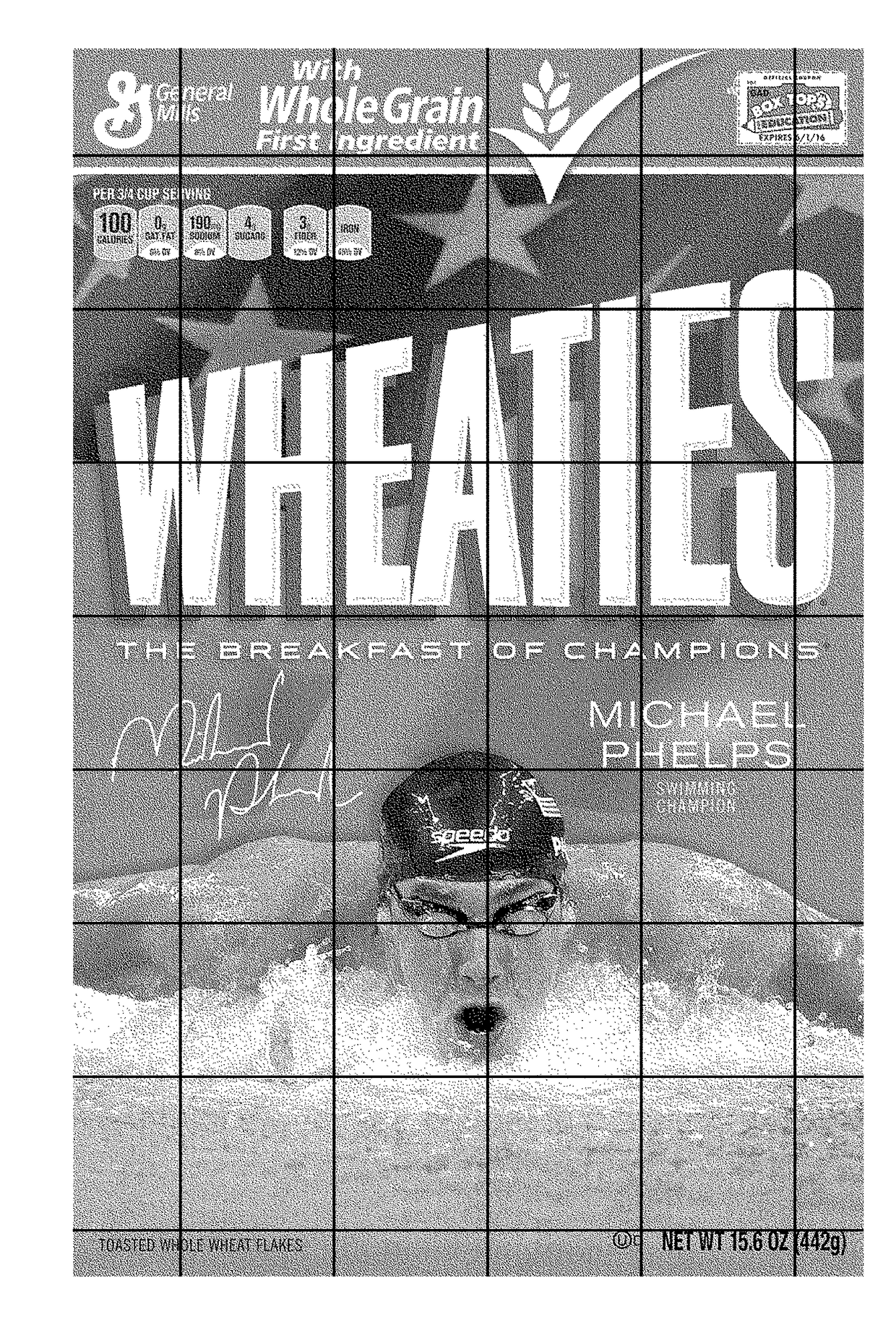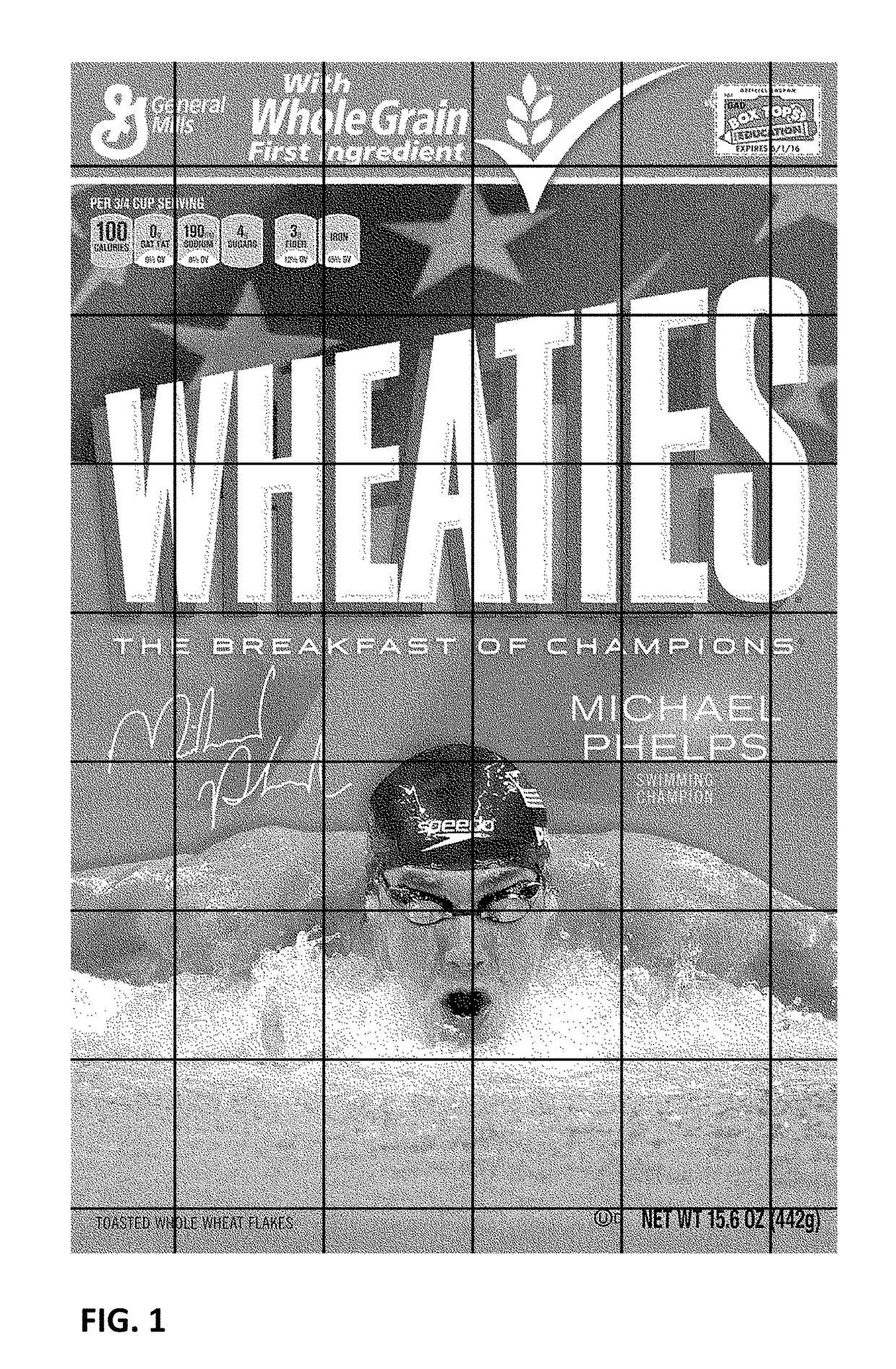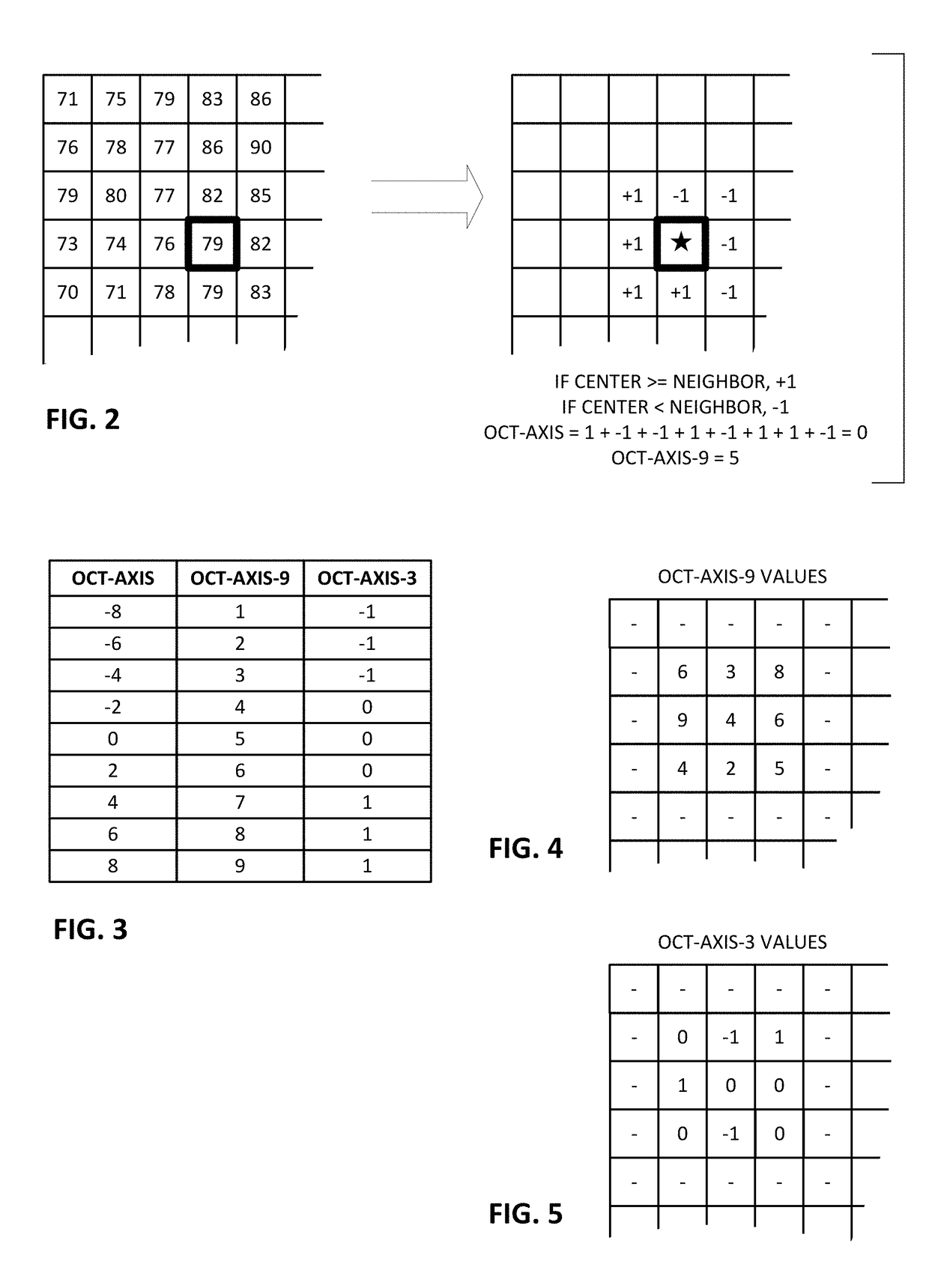Image-based pose determination
a technology of image and pose, applied in the field of image-based pose determination, can solve the problems of low computational power of processor chips employed in pos systems, tight processing resources and processing time constraints, and computational burden
- Summary
- Abstract
- Description
- Claims
- Application Information
AI Technical Summary
Benefits of technology
Problems solved by technology
Method used
Image
Examples
third embodiment
[0240](This is typical for the detailed fourth arrangement; true matches have Hamming distances below 50; mis-matches start to appear above that distance. The lower Hamming distances referenced in the third embodiment were due to the shorter L-tuples, i.e., 40 there versus 80 here.)
[0241]The same deep trough, and clustering, appears in plots depicting the Hamming distances of reference 80-tuples with the other pose parameters (e.g., X-translation, rotation; rotation, scale; etc.). Each has an appearance akin to a tornado—a cloud above, resolving into a tight funnel extending below.
[0242]FIG. 26 doesn't show dots corresponding to most of the 35 million entries in the reference data structure. Most have Hamming distances on the order of 110 to 130 from the query 80-tuple.
[0243]If the deep excursion of the Hamming trough into low Hamming distances, and the noted tight clustering, left any doubt as to the confidence of the determined pose, the process can be repeated by re-sampling the ...
fourth embodiment
[0261]As in the fourth embodiment, reference L-tuple data for a lattice of pose states are initially collected by modeling presentation of the calibration pattern at different pose states. The pose states are defined by quantization increments of 0.25 pixels in X- and Y-translation (across the 32 pixel height and width of the calibration pattern block), and 2 degrees in rotation (across all 360 degrees of possible rotation). The reference data collection procedure in the fourth arrangement is adapted to the above parameters.
[0262]The scale states (from 70% to 140%), however, are quantized non-uniformly. At the small end of the range, the scale quantization interval is 5% (i.e., 67.5% to 72.5%). At the high end of the range, the scale quantization interval is 3% (i.e., 138.5% to 141.5%). Intermediate scale state quantization intervals are linearly-interpolated between these values (although, of course, non-linear variation across this 70-140% range can be used).
[0263]After the refere...
first embodiment
[0301]As described in connection with the first embodiment, the histogram data can be approximated by Fourier coefficients instead of literal histograms with bin counts for each different parameter value. An illustrative arrangement uses 16 Fourier coefficients, 8 for cosine functions and 8 for sine functions, at each of 8 frequencies (theta, 2*theta, 3*theta, . . . 8*theta). So doing achieves some reduction in memory requirements, at the expense of some loss in data accuracy. As also described earlier, such histogram representations can be combined based on the teachings of Hill, using logarithms (e.g., the histograms are converted to log-likelihood functions prior to adding together).
Ninth Arrangement
[0302]A ninth arrangement of the present technology focuses on the “block selection” problem. (The earlier-detailed arrangements similarly address this problem, but the relevance is made explicit in the following discussion.)
[0303]FIG. 32 shows artwork that may be applied to an item o...
PUM
 Login to View More
Login to View More Abstract
Description
Claims
Application Information
 Login to View More
Login to View More - R&D
- Intellectual Property
- Life Sciences
- Materials
- Tech Scout
- Unparalleled Data Quality
- Higher Quality Content
- 60% Fewer Hallucinations
Browse by: Latest US Patents, China's latest patents, Technical Efficacy Thesaurus, Application Domain, Technology Topic, Popular Technical Reports.
© 2025 PatSnap. All rights reserved.Legal|Privacy policy|Modern Slavery Act Transparency Statement|Sitemap|About US| Contact US: help@patsnap.com



